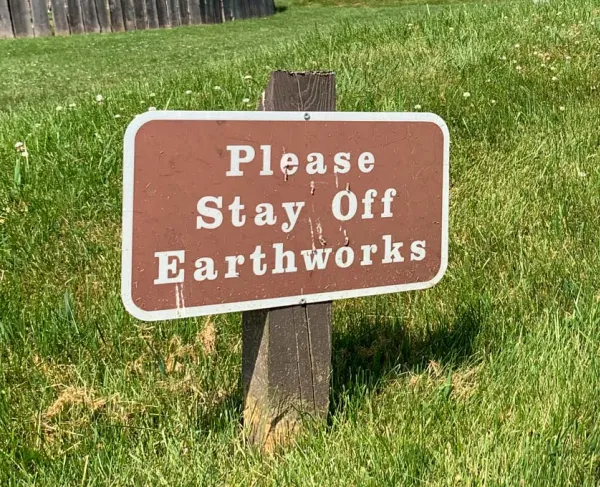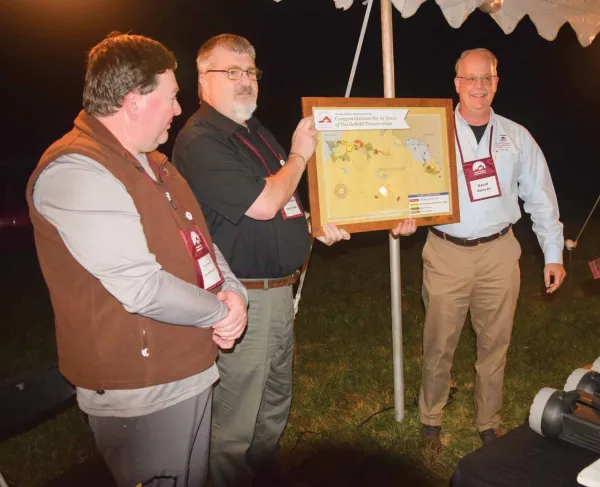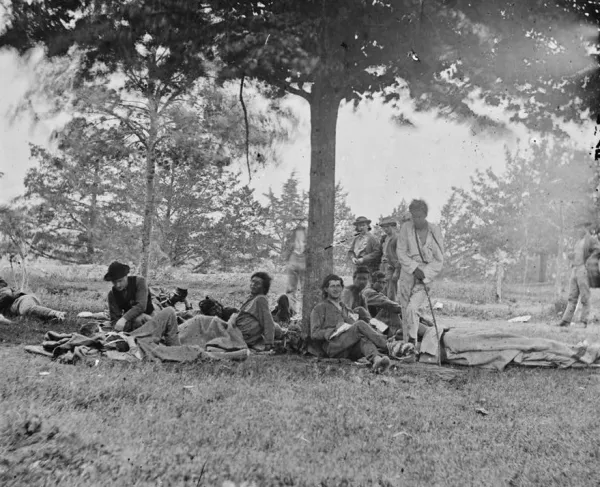
"Battle of the Wilderness – Desperate fight on the Orange C.H. Plank Road, near Todd's Tavern, May 6th, 1864" by Kurz & Allison, 1887.
"Under the heavy fire of the advancing enemy, picked up and carried several hundred yards to a place of safety a wounded officer of his regiment who was helpless and would otherwise have been burned in the forest."
John Patterson's Medal of Honor Citation
On February 6, 1899, Brigadier General John H. Patterson retired from the United States Army, ending a military career that spanned nearly 38 years. Patterson had served entirely in the infantry and unlike many of his peers, he had not attended the U.S. Military Academy at West Point. A native of New York, Patterson had enlisted as a First Lieutenant in the 11th U.S. Infantry shortly after the bombardment of Fort Sumter. During the Siege of Petersburg, he received a brevet to captain for gallant service at the Battle of Chapel House. This action, however, was not his most distinguished during the Civil War or the post-bellum years.
Early in May, 1864, the 1st Battalion, 11th U.S. Infantry crossed the Rapidan River to open the spring campaign in Virginia. Part of Brig. Gen. Romeyn Ayres’s brigade in Brig. Gen. Charles Griffin’s V Corps, Patterson and his comrades plunged into a dense, secondary woodland known as the Wilderness. This tangled region had the potential to negate the Union advantage in manpower and Union General-in-Chief Lt. Gen. Ulysses S. Grant along with the commander of the Army of the Potomac, Maj. Gen. George G. Meade, intended to push through as quickly as possible. Grant and Meade hoped to engage Gen. Robert E. Lee and the Army of Northern Virginia farther to the west in the vicinity of Orange Court House. That night, Ayres bedded down around Wilderness Tavern.
On the morning of May 5, Patterson’s corps, headed by Maj. Gen. Governeur K. Warren, moved out to consolidate the Union line along the Orange Turnpike. As skirmishers entered a clearing known as Saunders’ Field, they spotted gray infantry on the opposite ridge. Much to the surprise of the Union high command, Lee had elected to march out from his winter encampment and engage the Federals. Ayres deployed his men in two lines north of the turnpike and prepared for the inevitable assault. Surprisingly, it did not come. Although orders had been issued by Grant to attack immediately, Warren postponed his advance until Maj. Gen. John Sedgwick’s VI Corps could arrive and secure his right flank. The delay went on for several hours until Warren, under pressure from Meade, was forced to go forward.
A little after 1 p.m., Griffin stepped off. The 11th U.S. and their sister regiments of Regulars, along with the 140th New York made up Ayres’ first line. As the Union infantry advanced through the woods and entered Saunders’ Field, the Confederates opened fire. Still, Ayres’ professionals kept on. Reaching the center of the field, Patterson and the 11th U.S. received volleys from their immediate right front. This caused the line to lurch at a slight angle, leaving the New Yorkers to advance straight on. Undeterred, the 11th U.S. closed on the Confederate line where the 23rd Virginia and 37th Virginia Infantry regiments from Brig. Gen. George Steaurt’s brigade of Maj. Gen. Edward Johnson’s division waited. The 11th U.S. pressed forward and beyond the field’s western edge to slug it out with the Virginians.
Despite reaching the Confederate position, the Union assault had lost momentum and the Union ranks broke apart. Rather than face capture or death, many Federals elected to run the gauntlet back across Saunders’ Field to their own lines, including Patterson. Making his way through the dense and smoky undergrowth, he caught sight of a fellow officer, Lt. Wright Staples. Born in Great Britain, Staples had gone into battle that afternoon wearing a gray slouch hat. Mistaken for a Confederate, he was shot by a member of the 12th U.S. Infantry. Lying helpless, Staples watched as a brush fire, ignited from the musketry, crept toward him and called out to Patterson for help. Unable to lift Staples, Patterson began to drag him safety. After a short distance, Patterson was joined by two sergeants, John White and John Birmingham. Once the small party got free of the woods, they stopped briefly for a rest. Trying to catch their breath, they were happened upon by Lt. George Head of the 11th U.S. After the war, in a letter to Patterson, Head recalled that he “saw Staples lying on the ground, with yourself, if my memory is correct, supporting his head on your arm. The balls were flying thickly around us at the time. I looked at his face, and whispered to Cooley [regimental commander] that he was dying. I think that Staples must have overheard me, for he looked up into our faces and said “I do not wish to die yet; I am not ready.” A few seconds afterward he was dead.”
In the summer of 1897, Patterson was awarded the Medal of Honor for this action. He was cited for most distinguished gallantry “under the heavy fire of the advancing enemy in picking up and carrying several hundred yards to a place of safety a wounded officer of his regiment who was helpless and would otherwise have been burned in the forest.”
Related Battles
17,000
13,000





